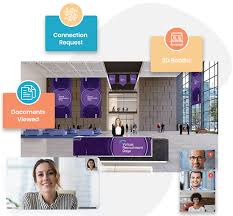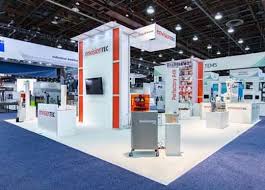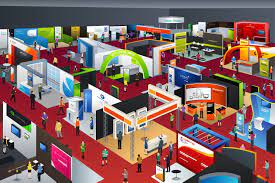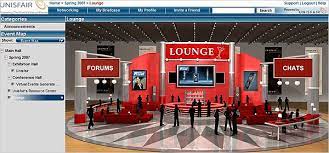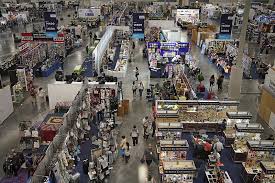Solution Events: Creating Impactful Experiences for Success
In today’s fast-paced and competitive business landscape, companies are constantly seeking innovative ways to stand out from the crowd. One powerful tool that has proven its worth time and time again is hosting solution events. These events provide a unique platform for companies to showcase their products, services, and expertise while engaging with their target audience in a meaningful way.
What exactly are solution events? They are specialized gatherings that bring together industry professionals, thought leaders, and potential customers with the common goal of finding solutions to specific challenges. Unlike traditional trade shows or conferences, solution events focus on addressing specific pain points or industry-related problems.
One of the key advantages of solution events is their ability to create a highly targeted environment. By narrowing down the focus to a specific problem or industry niche, attendees can connect with like-minded individuals who share similar interests and challenges. This targeted approach allows for more meaningful conversations, networking opportunities, and knowledge exchange among participants.
Moreover, solution events provide an immersive experience that goes beyond traditional marketing tactics. Attendees have the chance to interact directly with product experts and industry leaders through workshops, demonstrations, and interactive sessions. This hands-on approach enables them to gain deeper insights into potential solutions and make informed decisions about their business needs.
Another significant benefit of solution events is the opportunity they offer for companies to position themselves as thought leaders in their respective fields. By organizing informative presentations, panel discussions, or keynote speeches delivered by experts within the industry, companies can establish credibility and gain recognition as trusted advisors. This helps build brand awareness and fosters trust among potential customers.
Furthermore, solution events allow companies to gather valuable feedback directly from their target audience. Through surveys, Q&A sessions, or informal discussions during networking breaks, attendees can provide insights into their pain points and preferences. This real-time feedback can be used by companies to refine their offerings or develop new solutions tailored to meet the needs of their customers more effectively.
To ensure the success of a solution event, careful planning and execution are crucial. Companies must identify the specific problem or challenge they aim to address and design the event accordingly. This includes selecting relevant speakers, creating engaging content, and providing ample opportunities for networking and collaboration.
In conclusion, solution events have become an essential tool for companies looking to make a lasting impact in their industries. By providing a targeted environment for knowledge exchange, networking, and problem-solving, these events enable companies to showcase their expertise while connecting with potential customers on a deeper level. With careful planning and execution, solution events have the power to transform businesses and drive success in today’s competitive market.
7 Benefits of Solution Events: Enhancing Customer Experience, Boosting Sales, Building Brand Awareness, Facilitating Networking, Igniting Innovation, Saving Costs, and Promoting Knowledge Sharing
- Improved customer experience
- Increased sales
- Increased brand awareness
- Networking opportunities
- Innovation spark
- Cost savings
- Knowledge sharing
Drawbacks of Solution Events: Costly, Time-Consuming, and Potentially Ineffective
- They can be expensive to organize and host.
- It takes a lot of time and effort to plan the event.
- Solution events may not attract enough attendees or generate enough interest in the product or service being offered.
- The solutions presented may not be applicable to all attendees, resulting in a lack of engagement with the event’s content.
- There is no guarantee that the solutions presented will be successful in solving any given problem or issue for attendees, which could lead to disappointment and dissatisfaction with the event overall.
- If not properly managed, solution events can become overly technical and complex, making it difficult for non-experts to understand what is being discussed and presented during the event itself.
Improved customer experience
Improved Customer Experience: Enhancing Satisfaction through Tailored Solutions
In today’s customer-centric business landscape, providing exceptional experiences is paramount to building long-lasting relationships with clients. One significant advantage of solution events is their ability to improve customer experience by addressing their questions and offering tailored solutions.
Solution events create a unique platform for companies to directly engage with their customers in a more personalized and interactive manner. Attendees have the opportunity to ask questions, seek clarification, and express their specific pain points or challenges. This direct interaction allows companies to gain valuable insights into the needs and preferences of their customers.
By actively listening and understanding customer concerns during solution events, companies can offer tailored solutions that precisely address those challenges. This personalized approach demonstrates a genuine commitment to solving customer problems and showcases the company’s expertise in providing effective solutions.
The ability to offer tailored solutions at solution events not only enhances customer satisfaction but also builds trust and loyalty. Customers appreciate when their unique needs are understood and addressed promptly. By delivering customized solutions during these events, companies demonstrate that they value their customers’ success and are willing to go the extra mile to meet their requirements.
Moreover, solution events provide an ideal setting for showcasing product demonstrations or interactive sessions that allow customers to experience firsthand how a particular solution can benefit them. This hands-on approach helps customers visualize the value of the offered solutions, leading to increased confidence in making purchasing decisions.
Additionally, solution events often include networking opportunities where customers can connect with other professionals facing similar challenges. These connections allow for knowledge sharing and collaboration among attendees, further enhancing the overall customer experience.
In conclusion, improved customer experience is a significant pro of solution events. By actively engaging with customers, addressing their questions, and offering tailored solutions, companies can enhance satisfaction levels while building trust and loyalty. The personalized approach showcased during these events not only meets individual needs but also fosters long-term relationships with customers who feel valued and supported on their journey towards success.
Increased sales
Increased Sales: Unlocking Growth Potential through Solution Events
In the world of business, one ultimate goal remains constant across industries: increasing sales. To achieve this, companies are constantly exploring innovative strategies to capture the attention of potential customers and convert their interest into tangible revenue. One powerful advantage of solution events is their ability to significantly boost sales opportunities.
Solution events provide a unique platform for companies to showcase their products and services in a comprehensive and interactive manner. Unlike traditional marketing channels, such as advertisements or online promotions, solution events offer a more immersive experience that allows customers to gain a deeper understanding of what a company has to offer.
By bringing together industry professionals, thought leaders, and potential customers under one roof, solution events create an environment conducive to learning, exploration, and engagement. Attendees have the opportunity to interact directly with product experts who can answer their questions, address concerns, and highlight the key benefits of the offerings.
This direct interaction plays a crucial role in building trust and confidence in potential customers. By providing them with firsthand experiences and insights into how products or services can solve their specific pain points or meet their needs, solution events help bridge the gap between interest and purchase decision.
Moreover, solution events allow companies to demonstrate the value proposition of their offerings in real-time. Through live demonstrations, workshops, or interactive sessions, attendees can witness the practical applications of products or services. This hands-on approach not only enhances understanding but also showcases the unique features or advantages that set a company apart from its competitors.
Additionally, solution events offer an excellent opportunity for companies to generate leads and nurture relationships with potential customers. By capturing contact information during registration or through follow-up activities after the event, businesses can establish direct lines of communication with interested individuals. This enables targeted marketing efforts moving forward and increases the chances of converting leads into actual sales.
Furthermore, solution events often create a sense of urgency among attendees. The limited-time nature of these events encourages potential customers to make decisions and take advantage of any exclusive offers or discounts available. This can lead to an immediate boost in sales during or shortly after the event.
In conclusion, solution events have proven to be a powerful catalyst for increased sales. By providing customers with a comprehensive understanding of products and services, allowing direct interaction with experts, and creating a sense of urgency, these events create favorable conditions for driving conversion and revenue growth. As companies seek to expand their customer base and boost sales opportunities, solution events emerge as a valuable tool in their arsenal.
Increased brand awareness
Increased brand awareness: Solution events are a great way to spread the word about your business and build brand recognition among potential customers.
In today’s saturated marketplace, standing out from the competition can be a challenge. However, solution events provide an excellent opportunity to increase brand awareness and make a lasting impression on your target audience. By participating in or hosting solution events, you can effectively showcase your products, services, and expertise to a highly targeted audience.
One of the key advantages of solution events is their ability to attract individuals who are actively seeking solutions to specific challenges. These attendees are already interested in finding answers and are more likely to engage with your brand. By offering valuable insights, demonstrations, or workshops during the event, you can position your business as an industry leader and establish credibility.
Solution events also provide ample opportunities for networking and building relationships with potential customers. As attendees interact with your team and experience firsthand the value of your offerings, they are more likely to remember your brand in the future. Word-of-mouth recommendations and positive experiences shared during these events can further enhance your brand’s reputation and increase its visibility within the industry.
Moreover, solution events often attract media attention and industry influencers looking for newsworthy stories or innovative solutions. By participating in these events or being featured as a speaker or exhibitor, you can gain valuable exposure through media coverage or social media mentions. This increased visibility not only boosts brand awareness but also helps establish your business as an authority in its field.
Furthermore, through strategic branding efforts during solution events such as branded signage, promotional materials, or interactive displays, you can create a memorable experience that leaves a lasting impression on attendees. This consistent branding across various touchpoints reinforces your message and helps build recognition among potential customers long after the event has ended.
In conclusion, solution events offer businesses an excellent opportunity to increase brand awareness among their target audience. By showcasing expertise, engaging with potential customers directly, and leveraging strategic branding efforts, you can leave a lasting impression and build recognition for your brand. Whether participating as an exhibitor or hosting your own solution event, this pro of increased brand awareness can significantly contribute to the long-term success and growth of your business.
Networking opportunities
Networking Opportunities at Solution Events: Building Valuable Connections for Future Success
One of the significant advantages of solution events is the unparalleled networking opportunities they provide. These events serve as a hub for industry professionals, vendors, and businesses to connect and forge valuable relationships that can lead to fruitful partnerships in the future.
Attending a solution event opens doors to a diverse group of individuals who share common interests and goals. It offers a unique chance to interact with like-minded professionals who are passionate about finding solutions to industry challenges. Whether you’re an attendee, exhibitor, or speaker, these events create an environment conducive to meaningful conversations and relationship-building.
Networking at solution events goes beyond exchanging business cards or making small talk. It allows for in-depth discussions, knowledge sharing, and collaboration with individuals who have expertise in your specific field. By engaging in conversations with industry leaders, you gain insights into emerging trends, best practices, and innovative solutions that can propel your business forward.
Moreover, solution events attract vendors and service providers who specialize in addressing the challenges faced by attendees. This presents an opportunity to connect directly with potential partners or suppliers who can offer the products or services your business needs. Building relationships with trusted vendors can lead to long-term collaborations that enhance your operational efficiency and drive growth.
The networking opportunities at solution events extend beyond immediate business prospects. They provide a platform for building connections that could prove invaluable in the future. By fostering relationships with professionals from different sectors or complementary industries, you open doors to new opportunities for expansion or diversification down the line.
To make the most out of networking at solution events, it’s essential to approach interactions with a genuine interest in learning from others and offering value in return. Actively participate in panel discussions, workshops, and social activities where you can engage with fellow attendees on a personal level. Be open-minded and receptive to different perspectives while sharing your own experiences and expertise.
Furthermore, take advantage of organized networking sessions or designated areas where attendees can connect more informally. These settings provide a relaxed atmosphere for building rapport and establishing connections beyond the confines of formal presentations or exhibitions.
In conclusion, solution events offer unparalleled networking opportunities that can shape the future success of your business. By connecting with industry professionals, vendors, and potential partners, you gain access to a wealth of knowledge, insights, and collaborative possibilities. Embrace these networking opportunities at solution events to expand your professional network, foster valuable partnerships, and position your business for long-term growth and success.
Innovation spark
Innovation Spark: Igniting Creative Solutions at Solution Events
In today’s rapidly evolving world, innovation is the key to staying ahead of the curve. Businesses and consumers alike are constantly seeking fresh ideas and creative solutions to address their everyday challenges. One significant advantage of solution events is their ability to spark innovation by bringing together experts from different fields.
Solution events serve as a melting pot of diverse perspectives, experiences, and expertise. They gather professionals from various industries who come together to tackle common problems or challenges. This cross-pollination of ideas creates a fertile ground for innovation to flourish.
When experts from different fields collaborate and exchange insights, it opens up new possibilities and ways of thinking. The diverse backgrounds and expertise of attendees can lead to unexpected connections and breakthrough moments. By fostering interdisciplinary discussions and encouraging out-of-the-box thinking, solution events become catalysts for innovative solutions.
During solution events, participants engage in workshops, brainstorming sessions, or collaborative activities that encourage idea generation. These interactive environments provide a safe space for attendees to share their thoughts openly and bounce ideas off one another. As a result, innovative concepts emerge that may not have been possible without this collective exchange of knowledge.
Moreover, solution events often feature keynote speakers or panel discussions led by industry leaders and visionaries. These thought-provoking presentations inspire attendees with fresh insights and success stories from various sectors. By exposing individuals to new perspectives and groundbreaking ideas, these events stimulate creativity and encourage participants to think differently about existing problems.
The networking opportunities at solution events also play a crucial role in sparking innovation. Informal conversations during breaks or networking sessions allow attendees to connect with like-minded individuals who might have different expertise or experiences. These chance encounters can lead to unexpected collaborations or partnerships that generate innovative solutions beyond what any single individual could achieve alone.
Innovation is not limited to businesses alone; solution events can also benefit consumers directly. By focusing on solving everyday problems faced by individuals, these events provide a platform for inventors, entrepreneurs, and experts to showcase their innovative products or services. Attendees can discover groundbreaking solutions that enhance their lives and address their specific needs.
In conclusion, solution events have the power to ignite innovation by bringing together experts from different fields. By creating an environment that fosters interdisciplinary collaboration and encourages out-of-the-box thinking, these events inspire new ideas and creative solutions. Whether it’s addressing business challenges or improving the lives of individuals, solution events are a catalyst for innovation that drives progress in our ever-changing world.
Cost savings
Cost Savings: The Financial Advantage of Solution Events
In today’s business landscape, companies are always on the lookout for cost-effective marketing strategies that deliver maximum impact. When it comes to promoting products or services, solution events have emerged as a powerful tool that offers significant cost savings compared to traditional marketing campaigns.
One of the key advantages of solution events is their ability to achieve more with less. Unlike traditional marketing campaigns that can be resource-intensive and require substantial financial investments, solution events are often more budget-friendly. They require fewer resources to organize and promote effectively, making them an attractive option for companies looking to maximize their returns on investment.
The reduced costs associated with solution events can be attributed to several factors. Firstly, these events typically have a narrower focus and a targeted audience. This means that companies can allocate their resources more efficiently by tailoring their efforts towards a specific group of individuals who are genuinely interested in finding solutions to particular challenges or pain points.
Additionally, solution events often take place in more intimate settings compared to large-scale conferences or trade shows. This allows for a more personalized experience and reduces the need for extravagant venue rentals or elaborate setups. By opting for smaller venues and simpler setups, companies can significantly cut down on costs without compromising the quality of the event.
Furthermore, solution events leverage technology to their advantage. With advancements in digital platforms and online communication tools, companies can now host virtual or hybrid solution events at a fraction of the cost of traditional in-person gatherings. Virtual events eliminate expenses related to travel, accommodation, catering, and venue rentals altogether while still offering an engaging and interactive experience for attendees.
Another cost-saving aspect of solution events is their potential for collaboration and shared resources. Companies can partner with other organizations within their industry or related fields to co-host solution events. By sharing expenses such as event planning, marketing materials, and speaker fees, participating companies can significantly reduce individual costs while still reaping the benefits of hosting an impactful event.
In conclusion, the cost savings offered by solution events make them an attractive option for companies seeking effective marketing strategies without breaking the bank. By focusing on a targeted audience, leveraging technology, and exploring collaborative opportunities, companies can reduce expenses associated with organizing and promoting events while still achieving their desired outcomes. With careful planning and resource allocation, solution events provide a cost-effective way to connect with potential customers and drive business growth.
Knowledge sharing
Knowledge Sharing: Empowering Organizations through Solution Events
In the ever-evolving business landscape, knowledge is power. Organizations that embrace a culture of knowledge sharing are better equipped to make informed decisions, drive innovation, and stay ahead of the competition. One significant advantage of solution events is their ability to foster collaboration and create an environment where knowledge is freely shared among different stakeholders.
Solution events bring together professionals from various backgrounds, including industry experts, thought leaders, and potential customers. This diverse mix of individuals creates a melting pot of expertise and insights. Through interactive sessions, workshops, and panel discussions, participants have the opportunity to share their knowledge, experiences, and best practices.
The collaborative nature of solution events encourages open dialogue and the exchange of ideas. Attendees can learn from one another’s successes and failures, gaining valuable insights that can be applied to their own organizations. By sharing challenges faced in their respective industries or sectors, participants can collectively brainstorm potential solutions or approaches.
The knowledge shared at solution events goes beyond theoretical concepts or general information found in textbooks or online resources. It often includes practical tips, real-life case studies, and firsthand experiences that cannot be replicated elsewhere. This firsthand knowledge provides a unique perspective that can significantly impact decision-making processes within organizations.
By attending solution events, professionals gain access to cutting-edge research findings, emerging trends, and innovative strategies. They can tap into the collective intelligence of industry leaders who have already navigated similar challenges. This exposure to new ideas helps broaden perspectives and encourages out-of-the-box thinking when it comes to problem-solving.
Moreover, solution events provide a platform for networking opportunities that further enhance knowledge sharing. Attendees can connect with like-minded individuals who share similar interests or face similar issues within their organizations. These connections often lead to ongoing collaborations beyond the event itself.
The benefits of knowledge sharing at solution events extend beyond individual attendees; they also impact organizations as a whole. When employees return from these events armed with new knowledge and insights, they can contribute to more informed decision-making processes. This, in turn, can lead to improved strategies, increased efficiency, and better outcomes for the organization.
In conclusion, solution events play a vital role in promoting knowledge sharing among different stakeholders. By creating an environment where expertise is freely shared, these events empower organizations to make better decisions and drive success. The collaborative nature of solution events fosters innovation, encourages out-of-the-box thinking, and provides a platform for ongoing networking and collaboration. Embracing the power of knowledge sharing through solution events can propel organizations towards continuous growth and success in today’s dynamic business world.
They can be expensive to organize and host.
While solution events offer numerous benefits, it’s important to acknowledge that they can be expensive to organize and host. The costs associated with planning and executing a successful solution event can add up quickly, making it a potential drawback for some companies.
One of the main expenses comes from securing a suitable venue. Solution events often require spacious and well-equipped locations to accommodate presentations, workshops, networking areas, and exhibition spaces. Renting such venues can be costly, especially if they are in high-demand areas or include additional services like catering or audiovisual equipment.
Additionally, marketing and promotion expenses can significantly impact the budget. To attract the right audience and ensure a successful turnout, companies need to invest in targeted advertising campaigns across various channels. This includes online advertisements, social media promotions, email marketing, and sometimes even print materials. These costs can quickly accumulate, especially for larger-scale events with extensive reach.
Another significant cost factor is the logistics involved in organizing a solution event. This includes arranging transportation for speakers or attendees, managing accommodation if necessary, and coordinating all the necessary resources for smooth event operations. From hiring staff to setting up registration systems and ensuring technical support during presentations, these logistical aspects require careful planning and financial investment.
Lastly, there are expenses related to creating an engaging event experience. This may involve hiring professional speakers or industry experts who can deliver insightful presentations or workshops. Additionally, companies may need to invest in interactive technologies or props that enhance attendee engagement during the event.
Despite these challenges surrounding costs, it’s essential to consider the potential return on investment that solution events can offer. While initial expenses may seem daunting, a well-executed event has the potential to generate new leads, strengthen existing relationships with customers or partners, increase brand visibility and credibility within the industry—all of which can ultimately lead to business growth.
To mitigate some of these financial challenges associated with solution events, companies should carefully plan their budget from the outset. Exploring sponsorship opportunities, seeking partnerships with relevant industry stakeholders, and leveraging cost-effective marketing strategies can help alleviate some of the financial burden.
In conclusion, while the expense of organizing and hosting solution events can be a con, it is crucial to weigh these costs against the potential benefits and long-term impact that such events can have on a company’s growth and success. With strategic planning, resourcefulness, and a clear understanding of the desired outcomes, companies can navigate the financial challenges and create impactful solution events that deliver value to both attendees and organizers.
It takes a lot of time and effort to plan the event.
The Con of Solution Events: Time and Effort in Planning
While solution events offer numerous benefits for companies, it is important to acknowledge that they come with their fair share of challenges. One significant drawback is the considerable amount of time and effort required to plan and execute these events successfully.
Planning a solution event involves meticulous attention to detail, from identifying the target audience and defining the event objectives to selecting appropriate speakers, organizing logistics, and creating engaging content. Each step demands careful consideration and thorough research to ensure that the event achieves its intended purpose.
One of the primary reasons why planning a solution event can be time-consuming is the need for customization. Unlike generic trade shows or conferences, solution events require a tailored approach that addresses specific pain points or industry challenges. This means that organizers must invest time in understanding the needs of their target audience and curating relevant content accordingly.
Additionally, finding suitable speakers who possess expertise in the given field can be a time-intensive task. It requires thorough research, outreach, and coordination to secure knowledgeable professionals who can deliver valuable insights during presentations or panel discussions.
Moreover, logistical aspects such as venue selection, equipment setup, catering arrangements, and attendee registration demand careful planning and coordination. These tasks can be time-consuming as they involve multiple stakeholders and require attention to detail to ensure a seamless experience for participants.
Furthermore, marketing and promoting the event also require significant effort. Organizers must develop effective strategies to reach their target audience through various channels such as social media platforms, email campaigns, industry publications, or partnerships with relevant organizations. Crafting compelling messaging and coordinating promotional activities can be a labor-intensive process.
Despite these challenges, it is important to remember that with proper planning and allocation of resources, the benefits of solution events often outweigh the drawbacks. While they may require substantial time investment upfront, well-executed solution events have the potential to yield long-lasting results by generating leads, fostering relationships with potential customers or partners, establishing thought leadership, and driving business growth.
In conclusion, the time and effort required to plan a solution event should be considered as a con. However, by acknowledging this challenge and dedicating sufficient resources to the planning process, companies can overcome these obstacles and create impactful events that deliver significant value to both attendees and organizers.
Solution events may not attract enough attendees or generate enough interest in the product or service being offered.
One potential drawback of solution events is the challenge of attracting enough attendees and generating sufficient interest in the product or service being offered. While these events have the potential to be highly targeted and impactful, their success heavily relies on the ability to engage a relevant audience.
One factor that may contribute to this con is the niche nature of solution events. By focusing on specific challenges or industry problems, these events may limit their appeal to a broader audience. This can result in a smaller pool of potential attendees who are specifically interested in that particular problem or industry niche.
Additionally, competing with other industry events and conferences can pose a challenge. With numerous events taking place throughout the year, it can be difficult for solution events to stand out and capture the attention of potential attendees. This saturation of events can dilute interest and make it harder to attract a significant number of participants.
Furthermore, marketing and promotion play a crucial role in driving attendance at solution events. If event organizers fail to effectively market the event or reach their target audience, they may struggle to generate enough interest. Without adequate promotion, even well-planned solution events may go unnoticed by potential attendees.
To mitigate this con, event organizers must invest time and effort into strategic marketing campaigns. They should leverage various channels such as social media, email marketing, industry publications, and partnerships with relevant organizations to create awareness and generate interest in the event.
Moreover, offering compelling content and speakers is essential for attracting attendees. By curating informative sessions, thought-provoking presentations, or engaging workshops led by respected experts in the field, organizers can increase the appeal of their event and entice more participants.
In conclusion, while solution events offer unique opportunities for companies to address specific challenges and engage with their target audience on a deeper level, there is a risk that they may not attract enough attendees or generate sufficient interest in the product or service being offered. By carefully considering marketing strategies and ensuring compelling content, event organizers can maximize their chances of success and overcome this potential drawback.
The solutions presented may not be applicable to all attendees, resulting in a lack of engagement with the event’s content.
The Limitation of Solution Events: Addressing Diverse Needs
Solution events undoubtedly offer a plethora of benefits, but it’s important to acknowledge that they may not be a perfect fit for every attendee. One potential drawback is that the solutions presented at these events may not always be applicable or relevant to all participants. This can lead to a lack of engagement with the event’s content and potentially diminish the overall value for certain attendees.
The nature of solution events often involves focusing on specific challenges or pain points within a particular industry or niche. While this targeted approach can be highly effective for those who share those specific needs, it may leave others feeling disconnected or uninterested in the solutions being presented. Attendees who do not find relevant solutions for their unique circumstances might feel disengaged or perceive the event as less valuable.
To mitigate this challenge, event organizers must strive to strike a balance between providing specialized content and addressing broader industry concerns. By incorporating diverse perspectives and offering a range of topics and sessions, solution events can become more inclusive and cater to a wider audience. This approach allows attendees with different needs and interests to find value in the event, even if they are not directly affected by the specific challenges being addressed.
Additionally, proactive engagement strategies can help overcome this limitation. Organizers should encourage attendees to actively participate in discussions, ask questions, and share their own experiences during sessions. This creates an environment where attendees feel empowered to contribute their unique perspectives and challenges, fostering a more inclusive atmosphere.
Furthermore, providing opportunities for networking and informal interactions can also help bridge the gap between attendees’ diverse needs and the solutions presented at the event. Peer-to-peer knowledge exchange allows participants to learn from each other’s experiences and potentially discover alternative approaches or adaptations of presented solutions that could be applicable to their own situations.
While it is essential to acknowledge this con of solution events, it is equally important to recognize that no single event format can perfectly meet every attendee’s needs. By carefully curating content, encouraging active engagement, and fostering networking opportunities, organizers can enhance the overall experience for all participants, even if not every solution presented aligns directly with their specific requirements.
In conclusion, the potential lack of engagement with the event’s content due to the limited applicability of solutions presented is a valid consideration when organizing solution events. However, by incorporating diverse perspectives, encouraging active participation, and facilitating networking opportunities, organizers can mitigate this challenge and create a more inclusive environment that benefits a broader range of attendees.
There is no guarantee that the solutions presented will be successful in solving any given problem or issue for attendees, which could lead to disappointment and dissatisfaction with the event overall.
One potential drawback of solution events is the lack of a guarantee that the presented solutions will effectively solve attendees’ specific problems or issues. While these events aim to provide solutions, there is always the possibility that the proposed remedies may not yield the desired results.
Attendees may come to a solution event with high expectations, hoping to find the perfect answer to their challenges. However, due to the complexity and uniqueness of each situation, it is impossible for event organizers to guarantee success for every attendee.
This uncertainty can lead to disappointment and dissatisfaction among participants. They may leave the event feeling let down or frustrated if they did not find a suitable solution tailored to their needs. This can impact their overall perception of the event and potentially discourage them from attending similar events in the future.
To mitigate this con, it’s important for event organizers to set realistic expectations and communicate openly about the limitations of any solutions presented. They should emphasize that while these events provide valuable insights and possibilities, attendees must still evaluate and adapt any proposed solutions to their specific circumstances.
Additionally, organizers can encourage attendees to actively engage in discussions, ask questions, and seek clarification during sessions. This proactive approach allows participants to gain a deeper understanding of how certain solutions might apply to their unique situations.
Furthermore, providing opportunities for post-event support or follow-up can help address any concerns or disappointments that arise. This could include offering access to additional resources, connecting attendees with experts for further guidance, or facilitating networking opportunities among participants who share similar challenges.
In conclusion, while solution events offer valuable platforms for knowledge exchange and problem-solving, there is no guarantee that all attendees will find immediate success in solving their specific issues. It’s essential for organizers to manage expectations transparently and provide ongoing support beyond the event itself. By doing so, they can help mitigate potential disappointment and ensure that attendees still benefit from the overall experience.
If not properly managed, solution events can become overly technical and complex, making it difficult for non-experts to understand what is being discussed and presented during the event itself.
The Pitfall of Solution Events: Overwhelming Complexity
While solution events offer numerous benefits, it’s important to acknowledge that if not properly managed, they can become overly technical and complex. This complexity can pose a challenge for non-experts attending the event, making it difficult for them to grasp and fully understand the discussions and presentations.
One of the primary goals of solution events is to provide a platform for problem-solving and knowledge exchange. However, when the content becomes too technical or laden with jargon, it alienates those who may not have a deep understanding of the subject matter. This can lead to confusion, disengagement, and even frustration among attendees who are seeking practical solutions but struggle to comprehend the intricacies being discussed.
When solution events become overly complex, they fail to achieve their intended purpose of reaching a wider audience and offering accessible solutions. It’s essential for event organizers and presenters to strike a balance between providing in-depth information for experts while also catering to the needs of those who may be less familiar with the topic.
To avoid this pitfall, clear communication is key. Presenters should strive to explain concepts in a way that is easily understandable by all attendees. Utilizing visual aids, demonstrations, or real-life examples can help simplify complex ideas and make them more relatable.
In addition, incorporating interactive sessions or workshops where participants can actively engage with the content can enhance comprehension. This allows attendees to ask questions, seek clarification, and participate in hands-on activities that reinforce their understanding.
Furthermore, event organizers should consider offering different levels or tracks within the program. By providing sessions specifically tailored for different levels of expertise or knowledge, attendees can choose sessions that align with their understanding and comfort level. This ensures that both experts and non-experts have an opportunity to benefit from the event without feeling overwhelmed by technical details.
In conclusion, while solution events have significant advantages in facilitating problem-solving and knowledge exchange, there is a potential downside if the complexity of the content is not properly managed. Event organizers and presenters must be mindful of the diverse audience attending the event and strive to make the discussions and presentations accessible to all. By finding the right balance between technical depth and clarity, solution events can effectively deliver value to both experts and non-experts alike.

